بسم الله الرحمن الرحيم
السلام عليكم ورحمة الله تعالى وبركاته
Argeta gt coupe
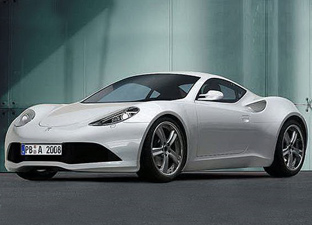
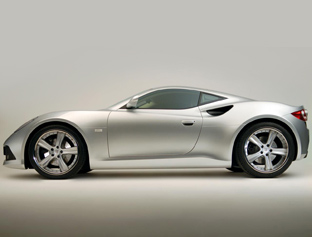
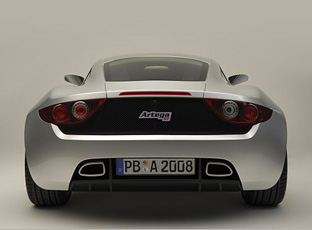
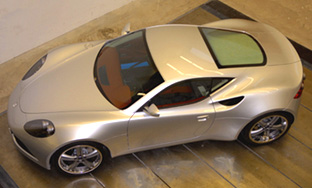
Artega GT Coupe
Year 2007
Engine 3.6 litre V6
Transmission 6-speed RWD
Max speed 169 mph
0-60 mph 5 seconds (approx)
Horsepower 300 hp @ 6600 rpm
weight 1100 kg / 2425 lbs
The Artega GT Coupe which was unveiled at the 2007 Geneva Motor Show is a small sports coupe designed by Henrik Fisker, the same designer responsible for Aston Martin's current lineup and also The Fisker Latigo CS and Fisker Tramonto based on the BMW 645i and Mercedes-Benz AMG SL55 respectivley.
Power for the Artega GT Coupe comes from a 300 horsepower, mid-mounted, VW derived 3.6 litre V6 driving power to the rear wheels. This should give the Artega GT a 0-60 mph time of around 5 seconds and a 169 mph top speed.
السلام عليكم ورحمة الله تعالى وبركاته
Argeta gt coupe




Artega GT Coupe
Year 2007
Engine 3.6 litre V6
Transmission 6-speed RWD
Max speed 169 mph
0-60 mph 5 seconds (approx)
Horsepower 300 hp @ 6600 rpm
weight 1100 kg / 2425 lbs
The Artega GT Coupe which was unveiled at the 2007 Geneva Motor Show is a small sports coupe designed by Henrik Fisker, the same designer responsible for Aston Martin's current lineup and also The Fisker Latigo CS and Fisker Tramonto based on the BMW 645i and Mercedes-Benz AMG SL55 respectivley.
Power for the Artega GT Coupe comes from a 300 horsepower, mid-mounted, VW derived 3.6 litre V6 driving power to the rear wheels. This should give the Artega GT a 0-60 mph time of around 5 seconds and a 169 mph top speed.
bmw m3 coupe
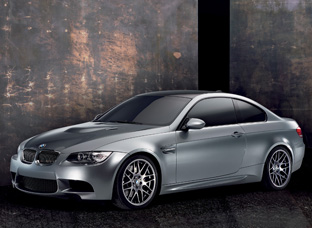
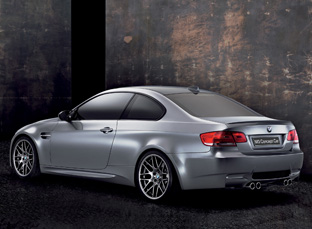
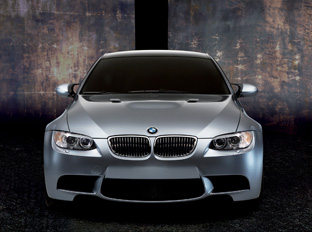
The 2007 BMW M3 was introduced at the 2007 Geneva Motor Show. At the core of this M3 concept study (which should be almost identical to the production car) is a V8 engine tuned to the high revving M concept
In keeping with tradition, the engineers at BMW M GmbH developed the BMW M3 as a fundamentally individualistic vehicle. The level of commitment to this approach is clearly demonstrated by its body. While it is based on the dimensions and the underlying form of the BMW 3 Series Coupé, virtually all body elements have been newly developed and designed from the ground up. Apart from the supporting vehicle structure, only the doors and the luggage compartment lid were taken over from the series model
All other components were specially engineered for the BMW M3, lending the vehicle exterior unique aesthetics that accentuate its superior power. Unmistakable features that make the BMW M3 instantly recognisable are the special trim at the front and rear, the engine compartment lid with its bulging Powerdome and two air intakes, the lateral air slots in the front side walls, the side skirts and the exterior mirrors in a BMW M typical design.
Front with additional air intakes, engine compartment lid with Powerdome. Faithful to the principle of "form follows function" in designing the body for the concept study, designers at BMW M GmbH used elements that not only visually emphasise the increased sportiness of the vehicle, but also serve a technical purpose. Conspicuous at the front are three large air intakes below the cooling grille that supply the engine with additional intake and cooling air. Strong, vertical struts delineate the air intakes and enhance their characteristic form.
Wheel arches and side skirts communicate agility and stability. The muscular front wheel arches of the BMW M3 symbolise the high level of agility and driving stability achieved by this vehicle.Together with the forged 19-inch light alloy rims in the classic Y-spoke design, they emphasise the vehicle's wide track, while a glance through the spokes of the rims reveals the compound high performance brakes developed exclusively for M vehicles.



The 2007 BMW M3 was introduced at the 2007 Geneva Motor Show. At the core of this M3 concept study (which should be almost identical to the production car) is a V8 engine tuned to the high revving M concept
In keeping with tradition, the engineers at BMW M GmbH developed the BMW M3 as a fundamentally individualistic vehicle. The level of commitment to this approach is clearly demonstrated by its body. While it is based on the dimensions and the underlying form of the BMW 3 Series Coupé, virtually all body elements have been newly developed and designed from the ground up. Apart from the supporting vehicle structure, only the doors and the luggage compartment lid were taken over from the series model
All other components were specially engineered for the BMW M3, lending the vehicle exterior unique aesthetics that accentuate its superior power. Unmistakable features that make the BMW M3 instantly recognisable are the special trim at the front and rear, the engine compartment lid with its bulging Powerdome and two air intakes, the lateral air slots in the front side walls, the side skirts and the exterior mirrors in a BMW M typical design.
Front with additional air intakes, engine compartment lid with Powerdome. Faithful to the principle of "form follows function" in designing the body for the concept study, designers at BMW M GmbH used elements that not only visually emphasise the increased sportiness of the vehicle, but also serve a technical purpose. Conspicuous at the front are three large air intakes below the cooling grille that supply the engine with additional intake and cooling air. Strong, vertical struts delineate the air intakes and enhance their characteristic form.
Wheel arches and side skirts communicate agility and stability. The muscular front wheel arches of the BMW M3 symbolise the high level of agility and driving stability achieved by this vehicle.Together with the forged 19-inch light alloy rims in the classic Y-spoke design, they emphasise the vehicle's wide track, while a glance through the spokes of the rims reveals the compound high performance brakes developed exclusively for M vehicles.
wallpaper

wallpaper

wallpaper

wallpaper

wallpaper
hyundai Qamaro
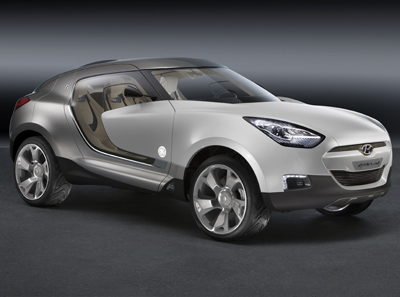
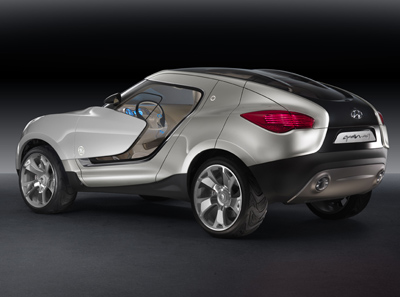
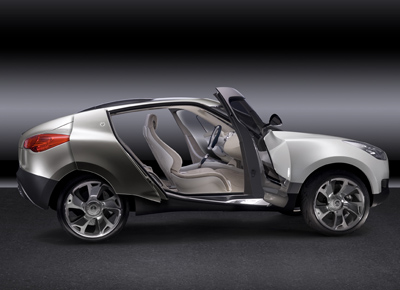
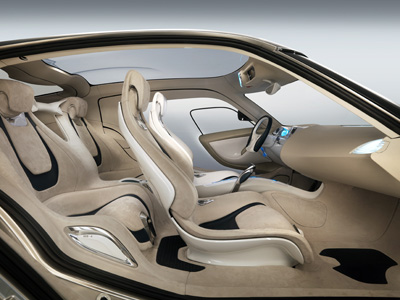
The Hyundai QarmaQ concept presented at the 2007 Geneva Motor Show was built in conjunction with GE Plastics who helped in creating the mostly plastic and composite-construction QarmaQ. The concept helps to demonstrate the design freedom and practicality of using plastics in components traditionally manufactured from metal, glass, and thermosets.
Among the benefits of using materials from GE Plastics in constructing the QarmaQ are a weight reduction of up to 60 kg that can offer an average fuel savings of up to 80 litres/year; improved pedestrian safety; and the ability to create complex, 3D shapes.
Energy-absorbing structures and the natural properties of GE's plastics are seamlessly integrated into the futuristic styling of the Hyundai QarmaQ. Different impact zones on the car correlate to the various areas of a pedestrian's body likely to be contacted in a collision.
Movable side glazing and a panoramic sunroof help treat the occupants to an all-around open-air experience, Lexan side glazing is specially treated to provide an abrasion-resistant and weatherable glass-like layer on the surface.
The Integrated lift gate of the Hyundai QarmaQ was designed as a working subassembly, the rear lighting, wiring, sensors, and all the necessary electronics are integrated into the lift gate. The dramatically shaped glazing demonstrated on the system is made from material found on the side windows.
الموضوع منقول من منتدى برامج نت للعضو (anouar-the)

wallpaper

wallpaper

wallpaper

wallpaper
hyundai Qamaro




The Hyundai QarmaQ concept presented at the 2007 Geneva Motor Show was built in conjunction with GE Plastics who helped in creating the mostly plastic and composite-construction QarmaQ. The concept helps to demonstrate the design freedom and practicality of using plastics in components traditionally manufactured from metal, glass, and thermosets.
Among the benefits of using materials from GE Plastics in constructing the QarmaQ are a weight reduction of up to 60 kg that can offer an average fuel savings of up to 80 litres/year; improved pedestrian safety; and the ability to create complex, 3D shapes.
Energy-absorbing structures and the natural properties of GE's plastics are seamlessly integrated into the futuristic styling of the Hyundai QarmaQ. Different impact zones on the car correlate to the various areas of a pedestrian's body likely to be contacted in a collision.
Movable side glazing and a panoramic sunroof help treat the occupants to an all-around open-air experience, Lexan side glazing is specially treated to provide an abrasion-resistant and weatherable glass-like layer on the surface.
The Integrated lift gate of the Hyundai QarmaQ was designed as a working subassembly, the rear lighting, wiring, sensors, and all the necessary electronics are integrated into the lift gate. The dramatically shaped glazing demonstrated on the system is made from material found on the side windows.
الموضوع منقول من منتدى برامج نت للعضو (anouar-the)
